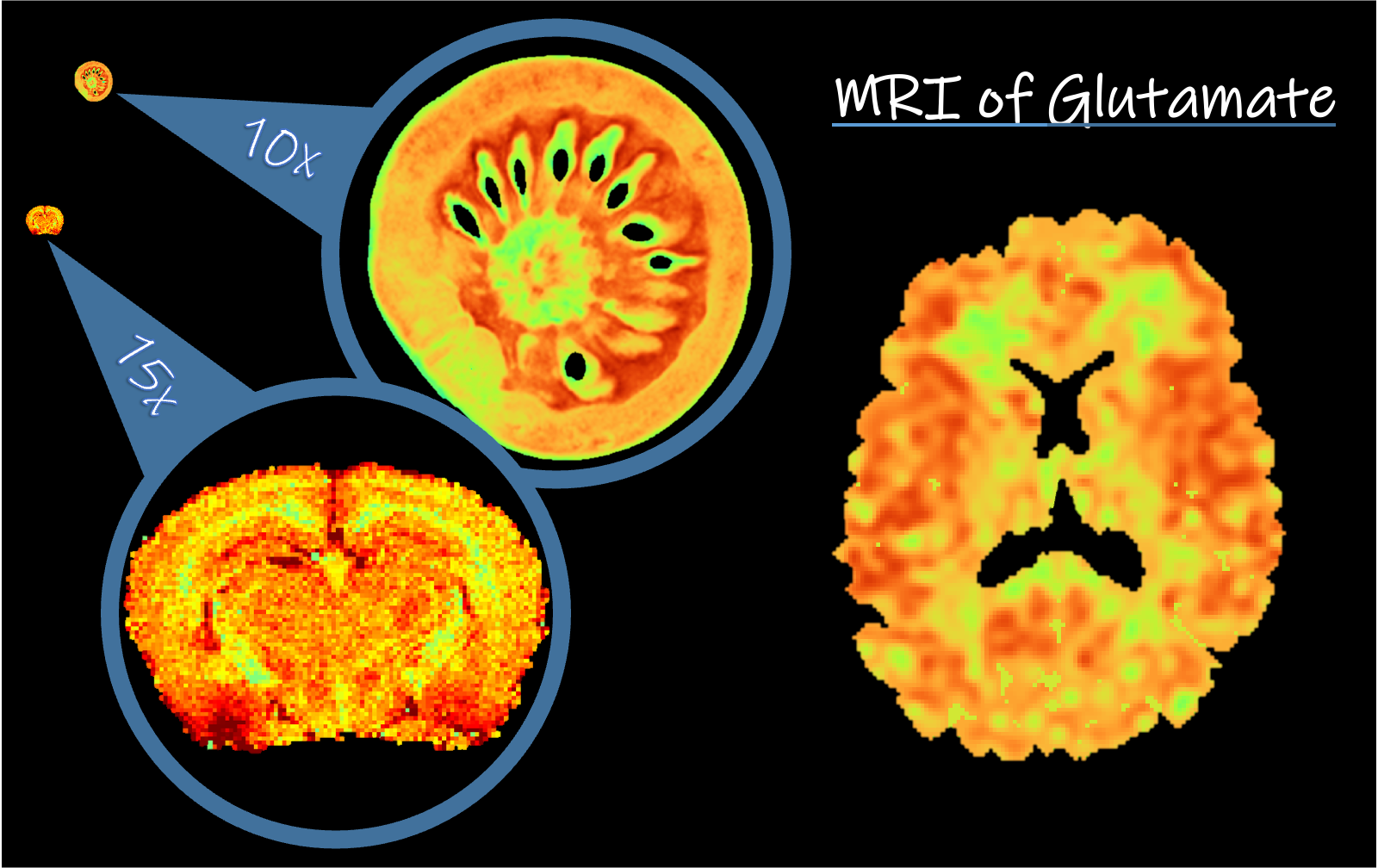
Leader:
Our research focuses on the development of new techniques for magnetic resonance imaging at high and ultra-high magnetic fields for the understanding of fundamental physical principles underlying biological function.To thisend,in the last years,we have concentrated on developing and implementing methods based on chemical exchange saturation transfer (CEST) aiming to improve the speed, sensitivity and specificity of in vivo metabolic MR experiments. Once developed, these methods are integrated in small animal and human studiesfor characterizing metabolism and functional metabolic changesin normal and pathological (e.g. Alzheimer’s disease) conditions.
Our team has successfully carried out several projects focused on metabolic imaging. We have developed a fast CEST acquisition (linescan-CEST), which allowed us to detect in vivo, for the first time, carnosine and derivatives in the rat brain and leg muscle. The linescan-CEST sequence was also used by our collaborators, C. Faber and V. Hoerr (Munster University), to investigate mutarotation kinetics in sugars. To aid the analysis of small CEST peaks we developed a dedicated software (https://github.com/SKMikee/PeakIt,). These developments will allow us to assess dynamic metabolic changes in vivo: glucose uptake, pH changes, functional metabolic changes.
Besides theoretical developments, the NeuroPhysics group heavily relies on the implementation and development of advanced magnetic resonance imaging methods at high and ultra-high magnetic fields (up to 17.2T). More specifically, NeuroPhysics researchers are investigating fast, high-resolution Blood Oxygen Level Dependent (BOLD) approaches, as well as non-BOLD strategies. Such strategies include functional diffusion (dMRI, efforts led by D. Le Bihan) and chemical exchange saturation transfer (CEST, efforts led by L. Ciobanu) for probing tissue functional microstructure and metabolic status, respectively. Multimodal approaches such as the combination of MRI with functional ultrasound, optical microscopy, and calcium imaging are also pursued (efforts led by D. Boido). The long-term goal is to facilitate translation of advanced neuroimaging approaches from small animal to human investigations, ultimately enhancing diagnostic and therapeutic approaches.
Members
Principal Investigators
PhD Students
• Camélia Ressam
• Romain Gaudin
Alumni
• Tomokazu Tsurugizawa